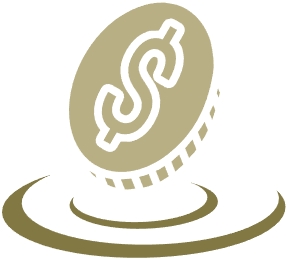Beginner’s Guide to Loans

They can assist to start an enterprise, attending school, or even giving your family food.
If you’re not cautious in your borrowing habits credit, it could be costly.
The lure of more cash can be tempting however, not being aware of concepts like interest and credit can cause to you to default on unneeded debt, or slide further into the rabbit hole.
Before you commit to a loan, you should be aware of the various types. We’ll help you determine the best one for your needs without worrying about whether it’s going to cost you a arm and a leg.
Is a loan a good idea?
All loans fall into one of two types: secured or unsecured.
If you have to borrow money, you may not always be able to pick the type of loan you will receive. If you are able to choose, the most appropriate choice for you will be based on cost, accessibility and accountability.

Secured vs. Unsecured loans
Secured loans
A loan is deemed “secured” when you put up collateral, which is an asset the lender has the right to be able to seize and sell should you do not pay your loan.
It could be your home or car, or even your savings. If you’re not able, or unwilling, to pay your obligation, a lienor legal claimmay be placed on your property, providing the lender assurance that they will be able to recover its funds.
The most commonly used secured loans include auto loans, mortgages and home equity loan, as well as the home equity line of credit ( HELOCs).
Unsecured loans
When you aren’t able to provide collateral to secure the loan or you don’t wish to provide any collateralyou are able to request an unsecure loan.
Since you don’t have anything to fall back on should you fail to pay, unsecured loans generally have smaller borrowing limits as well as higher interest rates.
Unsecured loans are often easier for people with poor credit, but without collateral, the cost of borrowing money to be much higher.
The most popular non-secure loans include credit cards as well as personal loans, and student loans.

The types of loans
In 2021, at the time of the last report the total of consumers held $4.4 billion of unpaid credit in accordance with data from Federal Reserve. This is an 5.8 percent increase over the previous year.
Although it is typical item for many American households, the kind of loan they select should depend on several variables, including:
- How much money do they require?
- What will it be employed for?
- How long do they have to be able to borrow
- Personal information, such as your scores on credit
7 of the most popular kinds of loans
1. Personal credit
It is a personal loan is a common type of borrowing that is beneficial for a variety of needs, including improving your home, making a trip to the dentist, or getting rid of debt. It’s as simple as that It’s as simple as borrowing the amount in a in a lump sum through a financial institution or online lender, and repay it by fixed installments, and interest added on top. In the majority of instances, you’ll have between 2 to 5 years repay the loan at a set, basic interest rate. After you have paid off the loan in full, your account will be closed.
2. Credit cards
The credit cardis one of the ways to repay debt. When you apply for a credit card, you’ll be given an amount of credit. The limit is a reserve that you can draw from for as many times as you’d like. If you pay your bill and pay them off, you free up funds to allow you to take out more loans. In contrast to the fixed timeframe that a loan can have you can borrow money through credit cards (and remain in the debt) for a long time.
3. Lines of Credit
The line of credit is a loan option provided by financial institutions that gives you an amount of credit that you can make use of and reuse depending on your requirements. Imagine it as an alternative to a credit card, but without the plastic in your wallet. Similar to credit cards you only pay interest on the funds you have to borrow, not the entire credit line that you were granted. In addition, the interest rates are generally lower than credit cards.
4. Student loans
When you take out the help of a student loan it is a way to borrow funds to pay for the costs of a postsecondary education which includes tuition costs, fees, books materials, and living expenses during your time at school. There are two types of student loans that are available: private and federal.
5. Auto loans
A auto loan is precisely what it looks like it’s a loan you can use to purchase a car. The cost of the new car was record-breaking at $48,182 in the month of July according to Kelley Blue Book. Because the majority of people don’t have that much cash available, it is necessary to get auto loans. Similar to the personal loan, this kind of loan has the same terms, namely a fixed time frame, monthly payments and a rate of interest. After you’ve paid off this loan vehicle is yours to keep.
6. Home equity loans
Home equity loans are an “second mortgage” that you apply for in addition to your home loan. It lets you borrow from your home equity one large chunk, and with an interest rate that is fixed. Once the loan has been paid off the lender either writes an amount of money in the amount of the lump-sum, or wires the funds into an account in your banking institution. The loan is then repaid over a period of time, usually between 10 and 30 years with equal monthly installments. This is a great choice for homeowners who like regular installments.
7. HELOCs
Lines of credit or HELOCs are a type of credit line that is accompanied by an interest rate that is variable. The lender allows you to borrow the amount — – the line of credit which you can draw at any time against the equity you have in your home. Like credit cards the interest is only charged on the amount you use. You’ll be able to have “draw” and “repayment” times where you can take what you require from your account for a certain duration of time. Then, you’ll have another set duration during which you’ll have to repay the loan. Since the interest rate can be variable, the amount you pay will fluctuate.









Leave a Reply